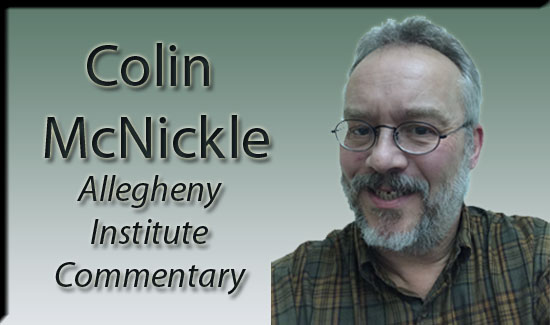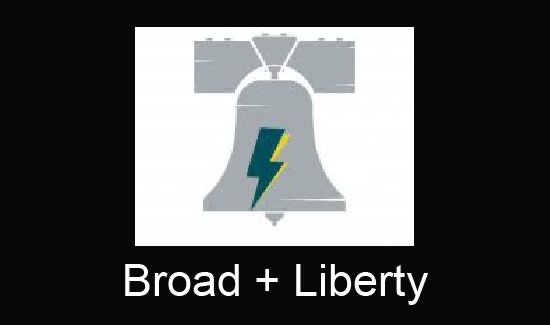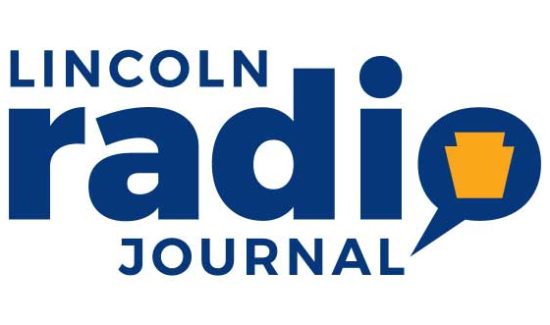Allegheny Institute: Act # 47 Errs Badly with Tax Recommendations
Pittsburgh’s Recovery Team unveiled its amended Recovery Plan last week, the latest step in the City’s tenure under Act 47 distressed status that began in December of 2003. The amended Plan came about after the state denied the City’s request to exit Act 47 in 2008. This Plan, with its five year financial projections and recommendations, basically means that the City can count on being under state watch until 2014 at the earliest.
And while the Plan does a fairly good and thorough job of reviewing the City’s financial situation and problems, it makes a very serious mistake toward the end of the narrative by mentioning the possibility of increasing the Local Services Tax (LST) from $52 to $145 and forestalling the state mandated drop in the parking tax. Just mentioning these as possibilities has allowed City officials to latch onto them as desirable alternatives to be explored. Now enormous amounts of time and energy will be wasted trying to persuade the Legislature to make the necessary statutory changes to permit the City to adopt the tax changes.
Already the Mayor has made comments about approaching Harrisburg to give the City authority to raise the LST and hold the parking tax at 37.5 percent rather cut it to 35 percent as required by law. The arguments are sterile and will fall mostly on deaf ears. Five years ago the Legislature gave Pittsburgh substantial new taxing power with the higher LST and the payroll preparation tax. In addition, the City was allowed to keep $4 million in RAD money that was being transferred to the School District and now receives 0.25 percent more in earned income tax the 2004 legislation shifted from the schools to the City. Pittsburgh also receives gaming dollars and will get more when the casino opens.
Then too, in 1994, the General Assembly created the Regional Asset Tax for Allegheny County (one percent local add-on sales tax). Pittsburgh is a major beneficiary of that tax, receiving direct support to be used for tax relief and through the tax’s support of regional assets previously dependent on hefty City payments such as the zoo, the aviary, museums, libraries, professional sports stadiums and so on.
The City collects an amusement tax and the nation’s highest parking tax from commuters and visitors. Moreover, nonresidential and commercial properties in the City pay a large share of real estate tax revenues collected by Pittsburgh and the School District—this in addition to the payroll preparation tax businesses pay. Thus, the notion that Pittsburgh is entitled to grab a bigger share of its revenue from nonresidents and the business community is wrongheaded to say the least.
With all the traditional taxes as well as the legislatively created new tax sources and greater revenue one thing has remained constant: the City has not been able to bring spending down on a consistent basis to a level matching its revenues. Debt and legacy costs have been allowed to grow out of control through excessive generosity in union contracts and an unwillingness to clamp down effectively on spending growth in general.
In the Act 47 Plan, the coordinator lays out the extent of the ongoing problems. Pittsburgh must deal with its unfunded pension liability ($523 million before the market downturn) and general obligation debt ($723 million) along with unfunded liabilities associated with other retiree healthcare benefits ($320 million) and the unfunded long-term cost of workers’ compensation ($128 million). Combined those four items total $1.7 billion, roughly what the City would spend in its general fund budget over a four year period.
To combat the legacy costs the Act 47 Plan recommends putting more money aside annually ($10 to $14 million above the $48 million currently set aside), starting a trust fund for retiree health care, avoiding additional borrowing, and monitoring workers’ compensation claims and treatment for those on compensation. While there is no shortage of ideas on how to reform the local government pension system in Pennsylvania and how reform might benefit Pittsburgh’s predicament, the Recovery Plan tries to keep its solutions "under current statutory constraints" without relying on a statewide overhaul of employee benefits.
Other major points in the Act 47 Plan:
• City employment has fallen 10 percent since 2004: In 2004 the original Recovery Plan noted that "reductions in the size of the Pittsburgh workforce can be an important contributor to fiscal recovery, so long as this goal can be achieved without severe, adverse service impacts". It makes sense: an employee reduction saves on wages, stops the accumulation of fringe benefits like pensions, and eliminates the chance of a workplace injury that adds to workers’ compensation. As the Allegheny Institute studies have shown, Pittsburgh has had and continues to have significantly more employees per 1,000 people than comparably sized U.S. cities. So there is room for further reductions.
• City workers still enjoy good benefits: "City workers receive health, retirement, and paid leave benefits superior to private sector norms and competitive with public employer standards". It is important to note that while City workers are receiving defined benefit plans the private sector and other state and local governments (including the state of Pennsylvania) have greater access to defined contribution plans. Baseline budget projections show that fringe benefits are expected to grow 27.5 percent from 2009 to 2013.
• To that end, the City will pay $93 million in FY2009 just for retiree benefits: Counting pension fund contributions, debt service on pension bonds, retiree health care (eliminated for those hired after December 31, 2004), Medicare, and Social Security, the City will pay about one-fifth of its budgeted expenditures toward retiree benefits.
In sum, despite the tax overhaul in 2005 which netted the City additional revenues and even though the Recovery Plan notes that "from 2005-2008 the City’s general fund revenues outpaced the general rate of inflation" there still is not enough money to meet the City’s spending needs.
According to the Act 47 plan 74 percent of the City’s general fund outlays are tied to employee-related expenses. The Plan also shows that the reduction in workforce has not resulted in a "severe or adverse" impact on services and that City employees are richly rewarded: especially on benefits that are superior to those enjoyed by other workers. And now, by mentioning the possibility of tax increases on nonresidents (despite the fact that the Plan earlier said that it would work within existing statutory constraints) City officials, residents, and employees will focus on how the state can once again step in to alleviate their revenue problem.
A far better approach to solving Pittsburgh’s problems would be to embrace the Allegheny Institute’s recommendation for general fund spending: adopt, by home rule charter amendment, a strict spending cap that holds per-capita inflation adjusted spending constant, or even better, holds total spending flat for at least five years. That would radically alter the five year expenditure trajectory and could deliver a nice surplus to be set aside for legacy costs and possibly allow for tax reductions.
In short, Pittsburgh simply must address the profligacy of its past spending head on. The City cannot expect the state, with all its own problems, to keep riding to the rescue.
________________________________________
Jake Haulk, Ph.D., President Eric Montarti, Senior Policy Analyst
________________________________________
Note: Taxpayer Protest in Harrisburg. Please join State Representative Daryl Metcalfe and other fellow Pennsylvania taxpayers as they hold a peaceful protest on June 9th beginning at 9:00 am at the State Capitol Building. For more information please contact Representative Metcalfe at 724.772.3110 or visit his website at repmetcalfe.com.
Please visit our blog at alleghenyinstitute.org/blog.
If you have enjoyed reading this Policy Brief and would like to send it to a friend, please feel free to forward it to them.
For more information on this and other topics, please visit our web site: alleghenyinstitute.org
If you wish to support our efforts please consider becoming a donor to the Allegheny Institute. The Allegheny Institute is a 501(c)(3) non-profit organization and all contributions are tax deductible. Please mail your contribution to:
The Allegheny Institute
305 Mt. Lebanon Boulevard
Suite 208
Pittsburgh, PA 15234







